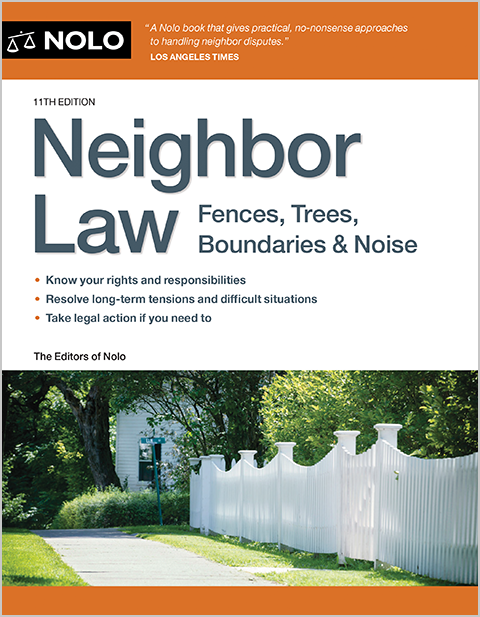The basics of homeowners' insurance in case your property is damaged or you get sued for someone's injuries. Make sure you have enough to cover the most likely or expensive disasters.
Before finalizing a home purchase, the vast majority of buyers purchase homeowners' insurance for their new property. Such coverage is important for two reasons:
- Because if the homebuyers are taking out a mortgage loan, their lenders will require them to purchase at least a minimal level of "hazard insurance."
- It serves to protect the homebuyers' personal interests; not only with regard to damage with the house, but because the standard policy also includes personal liability insurance and additional hazard coverage (more than the lender requires).
We'll get into the details here, including:
- what different types of insurance are wrapped into the standard comprehensive homeowners' policy
- how much homeowners' insurance you realistically need, and
- how to shop for the best homeowners' insurance policy.
What Homeowners' Insurance Should Cover
A standard, comprehensive homeowners' insurance policy includes:
- Hazard insurance. This covers physical damage or loss involving property and possessions (as required by mortgage lenders).
- Liability insurance. This covers injuries either to people on the property or caused by members of the household (including pets), whether or not they were on the property at the time (excluding car accidents).
What Hazard Insurance Covers
The list of damage and disasters commonly covered by hazard insurance is surprisingly long: unintentional physical damage to your property and its contents caused by fire and smoke, wind, hail, lightning, explosions, volcanoes, riots and vandalism, theft, water damage, and similar events. In addition to covering the house itself, the hazard coverage will typically protect furnishings and other personal items, as well as any other structures on the property, such as a pool or separate garage (unless you use these for nonresidential purposes, such as for a home business).
Watch out for what's listed in the "exclusions" section of your policy. Most policies' hazard coverage doesn't cover business equipment, damage caused by natural disasters, or loss of art or jewelry over a certain amount. It's also typical for policies to exclude damage caused by mudslides, police activity, power outages, sewer backups, dry rot, and vermin. You will want to purchase additional hazard coverage if your house is in a high-risk area for fire, floods, earthquakes, or other natural disasters; or if you have expensive art, jewelry, or business equipment at home. The key is to buy added coverage for hazards that can cause huge damage (like sewer backups) or that are big risks in the area where you live, like earthquakes in parts of California, hurricanes along the Gulf Coast and Eastern Seaboard, or sinkholes in parts of Florida.
What Personal Liability Insurance Covers
The liability insurance portion of your policy compensates for two things:
- Medical payments to others. This pays the medical bills of people from outside your household who are accidentally injured while on your property or by you or a household member, including a pet, whether on your property or elsewhere. If the mail carrier, for example, trips over your kid's skateboard or gets clawed by your cat, your policy will pay for the carrier's medical expenses and other losses, up to a certain limit.
- Personal liability. If you are sued, this covers both your legal fees and any amounts a court orders you to pay to the person who was injured or whose property was damaged by someone in your household (human or animal). (For more information on your liability for injuries caused by your pets, see Dog Owners' Liability for Bites and Other Injuries: An Overview.) In fact, the damage that gave rise to the civil lawsuit doesn't have to have occurred at your home. If your kid rides the skateboard through the neighbor's fresh new cement path, or the cat shreds their screen door, those damages should also be covered.
Standard homeowners' policies traditionally provide around $100,000 in liability coverage. You can easily imagine how someone's medical bills could top that amount, however. It's true that, unlike hazard insurance, personal liability coverage isn't required by mortgage lenders. Nevertheless, rather than putting your house at risk of being sold to pay a court judgment or someone's medical bills, make sure your liability coverage is at a realistic level. Experts put this between $300,000 and $1 million. An alternative way to calculate this is to set it at the level of your assets. In other words, if a major court judgment forced you to sell your home, boat, art collection and/or vacation home, how much would you stand to lose?
Will You Have Enough Homeowners' Insurance to Cover Rebuilding a Destroyed Home?
Let's take the most unlikely (but scary) scenario: A fire or other hazard destroys your house or makes it unlivable. You might expect your insurance company to pay for it to be rebuilt, or restored to just what it was before, but what will actually happen depends on the terms of your policy.
Look Carefully at How Your Policy Calculates the Total Amount You'll Be Given to Rebuild Your Home With
Again, this isn't a blank check situation. In the worst case, if you are underinsured, you could find that you can't afford to rebuild and will have to sell the damaged property.
The norm: replacement cost coverage. If your house is basically destroyed, the amount you receive to rebuild under a standard policy with "replacement cost" coverage will be a set dollar figure, which you'll see in the policy. That figure is calculated in advance, using information you provide to the insurance company about the house's size, location, number and type of rooms, building materials, amenities, historical features, and more. That's often information that you report to your insurance agent or company when you first purchase the policy.
However, when disaster strikes, this figure could turn out to be way off the mark, particularly if you underreported your house's features, building costs have gone up, a widespread natural disaster increases demand for home builders and contractors, you have remodeled and not updated your insurance, or your house has historical features that will be hard to recreate. The lesson here is to make your insurance carrier aware of your home's many fine features, rather than trying to reduce your premium by hiding them.
Another issue of concern is that, by the time you need the insurance coverage, municipal building codes might have changed. For instance, your city or locality might require better and more extensive electrical wiring, thicker walls with higher-quality insulation, more fire protective features, and so on. The result might be that restoring heavily damaged portions of your home can no longer be legally done. Such a situation will require you to make major changes to the home's design and plan, rather than just recreating what was there before. To deal with this possibility, many experts recommend separately buying building-code upgrade coverage, so that the insurance company automatically pays for the increased costs caused by such building-code changes.
To be avoided: actual cash value coverage. If an insurance company offers you a policy that pays the "actual cash value" of your house, start looking elsewhere for coverage. Cash value policies are sometimes pushed on people with older houses or ones with an inadequate water supply (a fire danger). With actual cash value coverage, you'd get the house's replacement cost minus any depreciation or wear and tear that it has suffered since being built—for example, the insurance carrier might deduct for a roof that needed to be replaced—which means you are almost guaranteed not to have enough with which to rebuild the place.
The ideal: guaranteed replacement coverage. If you look very hard (and pay much more), you might just find a policy that guarantees payment of 100% of your repair or rebuilding costs, without limits. This rare and wonderful creature is called a "guaranteed replacement cost" policy. If your house has historical features that are hard to reproduce, finding such a policy will be especially difficult, however.
Check Coverage Amounts for Living Costs and Personal Possessions Coverage
In addition to checking your homeowners' policy for how much you'll get to rebuild your home with after major destruction, check the fine print for these related items:
- Living costs while your home is being rebuilt. This is called a "loss of use" provision. It often includes payment for hotel bills and restaurant meals for a certain period of time. One year is a standard provision, but if you can get coverage for two years, that would obviously be better (especially if a major disaster hits your whole region and everyone is trying to line up architects and home contractors). Some policies place a dollar limit (instead of a time limit) on your living expenses, often 20% of the total insurance on your house.
- Replacement costs for personal possessions. Much like the different amounts of money you can get to rebuild the house itself, there are different levels of coverage for the stuff inside. Some policies offer "replacement value," meaning the actual cost of buying a new item. Others offer "actual cash value," which is the amount you could get by selling your possessions after taking depreciation into account (think "how much can I get for it on eBay?") And again, make sure you've considered extra coverage for any big ticket items such as jewelry, sports equipment, or camera equipment whose value goes over your policy limits.
Review Your Homeowners' Insurance Deductible Amount
A deductible is the amount you must pay after a loss before your insurance company steps in. Most homeowners agree to a $500 deductible (for the hazard portion; liability insurance doesn't normally carry a deductible).
However, raising your deductible to a higher amount can be a great financial move. It not only allows you to significantly reduce your premium costs, but also prevents you from being too quick to call your insurer for coverage. The more claims you make, the more likely the insurer is to raise your premiums or cancel your policy.
Of course, you'll want to make sure you set aside the deductible amount in savings, perhaps within an emergency fund. That way, you won't find yourself trapped, unable to spend enough to trigger the insurance coverage. And you'll also need to check in with your mortgage lender, which might limit the allowable amount of your deductible.
How to Find High-Quality, Affordable Homeowners' Insurance
Finding good homeowners' insurance coverage is crucial, both to help assure that you'll be given coverage rather than the runaround after a claim, and to reduce the risk that the company will later go bankrupt or cancel your policy. (Such issues are increasingly common following various major natural disasters such as flooding and wildfires.)
But finding good coverage can be surprisingly difficult, especially in certain states such as California and Florida. Some insurers have withdrawn altogether, or stopped writing new policies in these states.
Ask What Discounts You Might Qualify For
Insurers commonly offer various percentage-based discounts on premiums, either based on who you are or what features the house has. These vary by state, but one common example is for retired people (who are presumed to spend a lot of time at home performing maintenance and helping keep the place safe from burglars and fires). Another is for non-smokers (cigarettes, cannabis, and so on). And a home with a security system, fire alarm and sprinkler system, and/or water leak system might qualify for additional discounts. Homeowners who take precautions against possible damage with specified mitigation efforts, such as installing storm shutters or clearing away 5 feet of greenery from around their home (and replacing it with noncombustible material) might also qualify for discounts. See, for example, this flyer from the State of California on how fire-mitigation efforts can lead to lowered premiums.
What Might Cause Standard Insurers to Refuse Coverage (at Reasonable Rates)
Insurers are tightening up on expectations. The condition of your house and age of its components will of course factor into the coverage you are offered (or not). You might find that they condition coverage on things like getting an updated roof or electrical system. They might insist that composition shingles more than 15 years old be swapped out for newer ones, or that old knob and tube wiring be replaced.
Your and the seller's claims history will also be taken into account. If, for example, you or the property seller have made past claims for water damage (the usual precursor to mold), you might find that you can't purchase a policy at all; or at least not a reasonably priced one. The same thing goes if you've filed many insurance claims, despite the fact that there were made on different properties.
Backup Sources of Insurance If Standard Carriers Won't Cover You
The previous discussion has been mostly about "standard" or "admitted" insurers, meaning those licensed and regulated by the state government. Every state has a "guaranty fund" or program of a similar name that steps in and covers claims in situations where the admitted insurers' money runs dry and they can't pay all the claims being filed. That obviously makes these the safest types of companies to obtain insurance from.
However, if you're unable to find a policy with a standard or admitted insurer, there are two other options:
- Non-admitted or E&S lines (excess and surplus): These companies insure properties that the admitted insurers won't. Unfortunately, they come under less state regulation and receive no backup from guaranty funds. So you'd be taking a risk, for example that you'd see a sudden rate jump after a major disaster.
- State-sponsored insurers of last resort: These are entities formed by state governments that will insure properties where the homeowners have tried and failed to find standard insurance elsewhere. They are (not surprisingly) state-regulated and are covered by guaranty funds.
A broker can help you distinguish between types of insurers and help you find the best option. In fact, you might be required to have an insurance broker assist you, if the state doesn't offer any direct-to-consumer access to the surplus lines. The broker might also suggest a combo platter; for example, getting coverage from a standard carrier for everything except fire and smoke risk, which you'd turn to a state plan to cover.
Planning Ahead for the Possibility of Failing to Find Insurance Coverage
You can protect yourself against the possibility of not getting homeowners' insurance for a home you're buying by negotiating with its sellers to make obtaining insurance a contingency or condition of finalizing the deal. You might also see that your purchase contract requires you to start applying for insurance within the first few days of the closing period.
Plan to Not Claim Minor Homeowner Losses
Guard your policy well once you've got it. Don't file claims unless you have to.
If you file more than two or three claims, your rates will likely rise and your policy might be canceled. You are best advised to get a policy with a high deductible, so that you've got no reason to file lower-cost claims that will raise your premiums or lead to future cancellation of your policy.
Your lender might, however, insist you not go higher than a certain deductible amount, such as $1,500. The lender wants to ensure that you won't get into a bind if you're unable to afford the deductible and therefore unable to make the repairs needed to trigger your insurance coverage, thus devaluing the lender's collateral (your house).
Additional Resources Regarding Homeowners' Insurance
For detailed information on homeowners' insurance and other aspects of buying and owning a home, see Nolo's Essential Guide to Buying Your First Home, by Ilona Bray and Ann O'Connell (Nolo). And if you get into a dispute with your insurance company about what's actually covered under your policy, definitely consult an attorney.
Talk to a Lawyer
Need a lawyer? Start here.
How it Works
- Briefly tell us about your case
- Provide your contact information
- Choose attorneys to contact you
- Briefly tell us about your case
- Provide your contact information
- Choose attorneys to contact you


